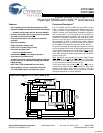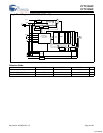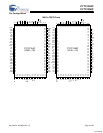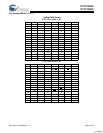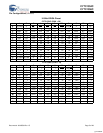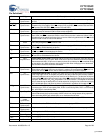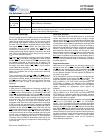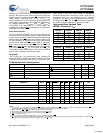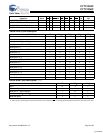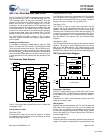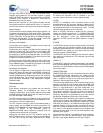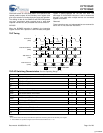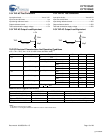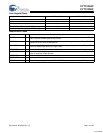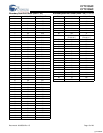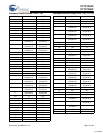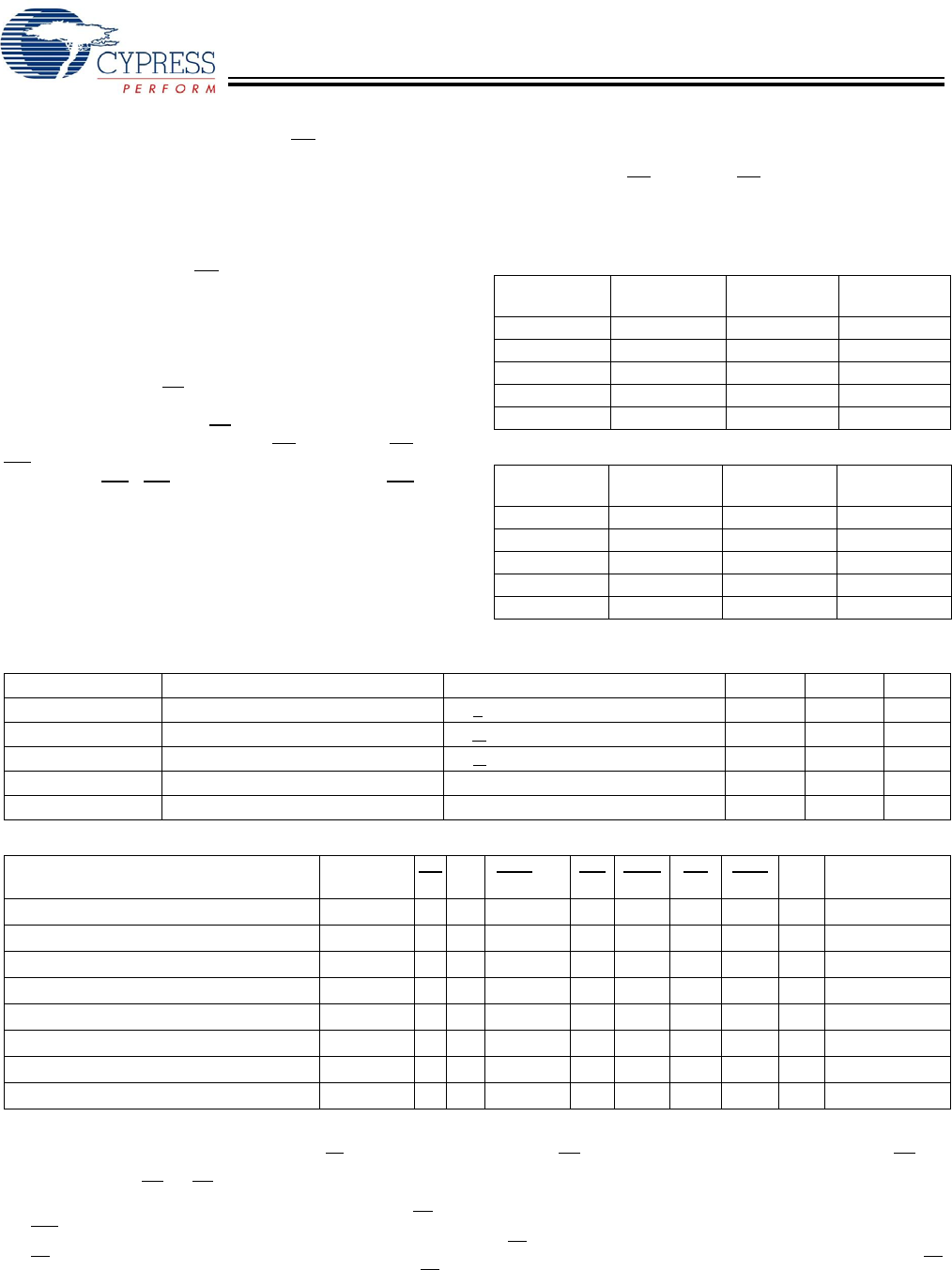
CY7C1354C
CY7C1356C
Document #: 38-05538 Rev. *G Page 8 of 28
Because the CY7C1354C and CY7C1356C are common I/O
devices, data should not be driven into the device while the
outputs are active. The Output Enable (OE) can be deasserted
HIGH before presenting data to the DQ
and DQP
(DQ
a,b,c,d
/DQP
a,b,c,d
for CY7C1354C and DQ
a,b
/DQP
a,b
for
CY7C1356C) inputs. Doing so will tri-state the output drivers.
As a safety precaution, DQ
and DQP
(DQ
a,b,c,d
/DQP
a,b,c,d
for
CY7C1354C and DQ
a,b
/DQP
a,b
for CY7C1356C) are
automatically tri-stated during the data portion of a write cycle,
regardless of the state of OE.
Burst Write Accesses
The CY7C1354C/CY7C1356C has an on-chip burst counter
that allows the user the ability to supply a single address and
conduct up to four WRITE operations without reasserting the
address inputs. ADV/LD
must be driven LOW in order to load
the initial address, as described in the Single Write Access
section above. When ADV/LD
is driven HIGH on the subse-
quent clock rise, the chip enables (CE
1
, CE
2
, and CE
3
) and
WE
inputs are ignored and the burst counter is incremented.
The correct BW
(BW
a,b,c,d
for CY7C1354C and BW
a,b
for
CY7C1356C) inputs must be driven in each cycle of the burst
write in order to write the correct bytes of data.
Sleep Mode
The ZZ input pin is an asynchronous input. Asserting ZZ
places the SRAM in a power conservation “sleep” mode. Two
clock cycles are required to enter into or exit from this “sleep”
mode. While in this mode, data integrity is guaranteed.
Accesses pending when entering the “sleep” mode are not
considered valid nor is the completion of the operation
guaranteed. The device must be deselected prior to entering
the “sleep” mode. CE
1
, CE
2
, and CE
3,
must remain inactive for
the duration of t
ZZREC
after the ZZ input returns LOW.
Interleaved Burst Address Table
(MODE = Floating or V
DD
)
First
Address
Second
Address
Third
Address
Fourth
Address
A1,A0 A1,A0 A1,A0 A1,A0
00 01 10 11
01 00 11 10
10 11 00 01
11 10 01 00
Linear Burst Address Table (MODE = GND)
First
Address
Second
Address
Third
Address
Fourth
Address
A1,A0 A1,A0 A1,A0 A1,A0
00 01 10 11
01 10 11 00
10 11 00 01
11 00 01 10
ZZ Mode Electrical Characteristics
Parameter Description Test Conditions Min. Max. Unit
I
DDZZ
Sleep mode standby current ZZ > V
DD
− 0.2V 50 mA
t
ZZS
Device operation to ZZ ZZ > V
DD
− 0.2V 2t
CYC
ns
t
ZZREC
ZZ recovery time ZZ < 0.2V 2t
CYC
ns
t
ZZI
ZZ active to sleep current This parameter is sampled 2t
CYC
ns
t
RZZI
ZZ Inactive to exit sleep current This parameter is sampled 0 ns
Truth Table
[2, 3, 4, 5, 6, 7, 8]
Operation
Address
Used CE ZZ ADV/LD WE BWx OE CEN CLK DQ
Deselect Cycle None H L L X X X L L-H Tri-State
Continue Deselect Cycle None X L H X X X L L-H Tri-State
Read Cycle (Begin Burst) External L L L H X L L L-H Data Out (Q)
Read Cycle (Continue Burst) Next X L H X X L L L-H Data Out (Q)
NOP/Dummy Read (Begin Burst) External L L L H X H L L-H Tri-State
Dummy Read (Continue Burst) Next X L H X X H L L-H Tri-State
Write Cycle (Begin Burst) External L L L L L X L L-H Data In (D)
Write Cycle (Continue Burst) Next X L H X L X L L-H Data In (D)
Notes:
2. X = “Don't Care”, H = Logic HIGH, L = Logic LOW, CE
stands for ALL Chip Enables active. BWx = L signifies at least one Byte Write Select is active, BWx =
Valid signifies that the desired Byte Write Selects are asserted, see Write Cycle Description table for details.
3. Write is defined by WE
and BW
X
. See Write Cycle Description table for details.
4. When a write cycle is detected, all I/Os are tri-stated, even during Byte Writes.
5. The DQ and DQP pins are controlled by the current cycle and the OE
signal.
6. CEN
= H inserts wait states.
7. Device will power-up deselected and the I/Os in a tri-state condition, regardless of OE
.
8. OE
is asynchronous and is not sampled with the clock rise. It is masked internally during write cycles. During a read cycle DQs and DQP
X
= Tri-state when OE
is inactive or when the device is deselected, and DQs = data when OE
is active.
[+] Feedback



